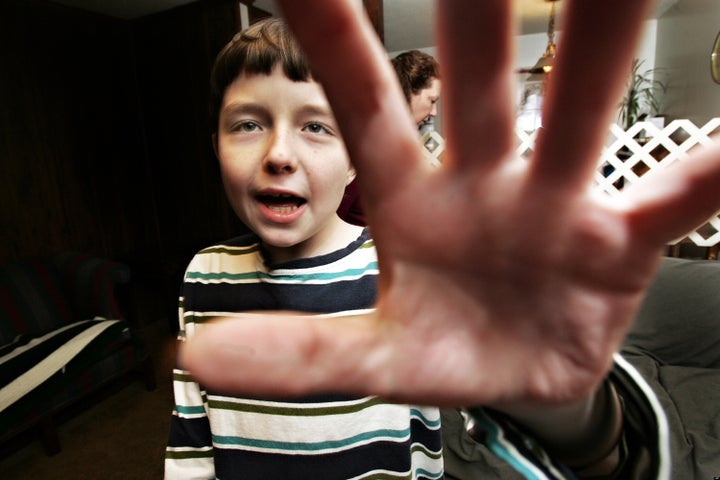
"Autism ... steals the soul from a child; then, if allowed, relentlessly sucks life's marrow out of the family members, one by one." So wrote Dr. Jerry Kartzinel in the introduction to Jenny McCarthy's bestselling "Louder Than Words." No wonder, then, that the concept of neurodiversity-- the idea that we should understand and accept autistic people as a group that thinks differently from the majority -- has proven to be so controversial.
After all, if autism is really the soul-stealing, marrow-sucking beast that Dr. Kartzinel describes, then certainly it should be cured. Neurodiversity is often dismissed as nothing more than a luxury available only to "high-functioning" autistic people, with nothing to offer to those more severely affected by autism.
I came up against this point of view many times as I made "Loving Lampposts: Living Autistic," my documentary about autism, and I've wrestled with it myself.
Even though my son struggles with communication and social interaction and suffers from multiple anxieties, most people who meet him would probably describe him as high-functioning. There's a decent chance that he can grow up to hold a job and live on his own. Neurodiversity makes sense for him, but why should I -- or anyone else -- assume that it makes sense for "lower-functioning" autistic people?
This sounds like a reasonable question, but in fact, I think it's really evidence of our misunderstanding of the concept of the autism spectrum. Everyone accepts the idea that autism is a spectrum disorder that affects each autistic person differently. What's less obvious -- but perhaps much more important -- is that a single autistic person can reside at different places on the autism spectrum at different times.
Take my son, for example. Try to get him on to a New York subway's C train (of which he has a huge phobia), and he'll writhe and scream and need physical restraint to prevent him from accidentally hurting himself or someone else. But give him a pen and a pad of paper and ask him to write his favorite words, and you'll be certain he's high-functioning.
More dramatically, consider the case of Sharisa Joy Kochmeister, one of the first autistic people I met as I made my film. Sharisa is nonverbal, and from the time she was 2 until she was 12, everyone assumed that she could not communicate. She had an IQ of 30 and was placed in special education classes that were not much more than babysitting. A classic case of low-functioning autism.
But by chance, Sharisa's father allowed her to participate in a study in which autistic people tried to communicate using text to speech devices. To the shock of everyone involved (except Sharisa), she demonstrated that she could read and write. Though still nonverbal, she's now an advocate for people with disabilities and a college graduate with a genius IQ.
The critical thing to understand about this story is that Sharisa did not change. Her circumstances did. So the label of "low-functioning" was not actually a description of Sharisa but rather a description of the particular situation in which she lived for 10 years. When her environment changed, so did her label.
Simon Baron-Cohen, the director of Cambridge University's Autism Research Centre, made this point in an interview for my film. He described autism as a label that helps people access the services they need. Sometimes, as they grow older, their environment changes, and they no longer need the label. In those cases, he removes their autism diagnosis. He hasn't cured their autism. He's simply recognized their new circumstances.
The implications for neurodiversity are profound. Sharisa's story shows us that we can never know for sure what's going on inside another person, no matter what we think we know. And we certainly can't predict how an autistic person might develop or how his circumstances might change. Viewed in this light, neurodiversity can be seen, at least partially, simply as an acknowledgement of life's uncertainty.
But it's more than that, too. Think of "autistic behaviors" like spinning, rocking or hand-flapping, behaviors that many therapies are designed to reduce or eliminate. When we understand that we don't really know what's going on inside an autistic person, we understand that those behaviors may have meanings that we can't see. Advocates for neurodiversity suggest that autistic people are as human as the rest of us. Like everybody else, they are entitled to any obsessions and behaviors that won't hurt themselves or others.
Neurodiversity cautions us against quick judgment and reminds us that we are all much more than our labels. And it suggests that interventions for autism should be geared less toward cures and behavior modification and more toward helping autistic people find the circumstances in which they can be their best selves.
Autism never stole anyone's soul. What's really harmful is forcing someone to act against his own nature.